Announced
Production status
Original name
System
Pros and cons
Downloads
Genres or subjects of photography
Recommended slowest shutter speed when shooting static subjects handheld
HD Pentax-DA* 16-50mm F/2.8 ED PLM AW
Standard zoom lens • Digital era
Abbreviations
| HD | Multi-layer High Definition coating is applied to the surfaces of lens elements. This anti-reflection coating increases light transmission, eliminates flare and ghosting, and maintains color consistence among all lens models. |
| * | Professional lens with high quality optics and robust build. Meets the highest standards and provides excellent performance and flawless image quality unachievable with traditional optical technologies. |
| DA | Autofocus lens optimized for Pentax digital SLR cameras. Learn more |
| ED | The lens incorporates low dispersion elements. |
| PLM | The lens is equipped with Pulse Motor. |
| AW | Dust-proof and water-resistant lens. |
Model history
| ■smc Pentax-DA* 16-50mm F/2.8 ED AL [IF] SDM | A | 15 - 12 | 0.30m | ⌀77 | 2007 ● | |
| ■HD Pentax-DA* 16-50mm F/2.8 ED PLM AW | A | 16 - 10 | 0.30m | ⌀77 | 2021 ● | |
Specification




| Optical design: | |
| 16mm - 50mm [3.1X zoom ratio] | |
| F/2.8 across the focal length range | |
| APS-C | |
| Pentax K [45.5mm] | |
| 82.9° @ 16mm - 31.6° @ 50mm (Pentax K APS-C) | |
| 16 elements in 10 groups | |
| 4 ASPH, 3 ED, 1 AD | |
| Internal focusing (IF) | |
| 35mm equivalent focal length range and speed: | |
35mm equivalent focal length range: | 24.5mm - 76.5mm (in terms of field of view) |
35mm equivalent speed range: | F/4.3 (in terms of depth of field) |
| Diaphragm mechanism: | |
Diaphragm type: | Automatic |
Aperture control: | None; the aperture is controlled from the camera |
| 9 (nine) | |
| Zooming: | |
Zoom mechanism: | Manual |
Zoom control: | Zoom ring |
Zoom type: | Rotary |
Zooming method: | Extends while zooming |
| Focusing: | |
| 0.3m | |
| 1:4.17 @ 50mm | |
Focusing modes: | Autofocus, manual focus |
Autofocus motor: | Stepping motor (Lead screw-type) |
Manual focus control: | Focusing ring |
Focus mode selector: | AF - MF |
Quick-Shift Focus System (QFS): | Yes |
| Shake Reduction (SR): | |
| - | |
| Physical characteristics: | |
| 712g | |
| ⌀84×117mm | |
| Dust-proof and water-resistant barrel | |
| Yes | |
| Accessories: | |
| Screw-type 77mm | |
| PH-RBN77 - Bayonet-type petal-shaped | |
| HD Pentax-DA 1.4X AF Rear Converter AW → 22-70mm F/3.9 |
Source of data
- Manufacturer's technical data.
Manufacturer description #1
2021.07.15 - TOKYO, July 15, 2021,-RICOH IMAGING COMPANY, LTD. is pleased to announce the launch of the HD PENTAX-DA★16-50mmF2.8ED PLM AW. Designed as one of the new-generation Star series of lenses for use with PENTAX APS-C-format digital SLR cameras, this large-aperture standard zoom lens features an open aperture of F2.8 over the entire zoom range to deliver exceptional optical performance.
This standard zoom lens has been developed as the latest model of the new-generation Star (★) series, designed to provide improved image quality and high-speed, high-precision autofocus operation to accommodate the super-high-performance digital cameras of the future. By incorporating the latest optical design technologies, the optics has been completely redesigned to assure high-resolution, high-contrast images even at open aperture. Compared with the existing smc PENTAX-DA★16-50mmF2.8ED AL[IF]SDM launched in July of 2007, this lens delivers greatly improved imaging performance. It also incorporates a PLM (Pulse Motor) for the first time in a large-aperture lens to assure high-speed, low-noise autofocus operation. It is even fine-tuned for greater operability in manual-focus operation. This new zoom lens allows users to fully enjoy the process of photography according to their own preferences.
Main Features of the new HD PENTAX-DA★16-50mmF2.8ED PLM AW
1. New-generation Star-series lens, designed for optimal image quality
Designed as a member of the new-generation Star-series series -- which provides the greatly improved resolving power that will accommodate the super-high-performance digital cameras of the future -- this standard zoom lens compensates various aberrations to a minimum and delivers sharp, clear images, not only in the middle of the image field but at the edges. Incorporating one ED (Extra-low Dispersion) glass optical element, one anomalous glass optical element and two ED (Extra-low Dispersion) aspherical glass optical elements, it effectively reduces chromatic aberration to a minimum over the entire zoom range. Coupled with high-grade, multi-layer HD Coating,* which reduces the average reflectance in the visible ray spectrum to less than 50% that of conventional multi-layer coatings, it effectively minimizes flare and ghost images even in demanding lighting conditions such as backlighting.
This standard zoom lens delivers exceptionally high resolving power and outstanding contrast even at open aperture, while capturing beautiful images with a smooth transition of the bokeh (defocus) effect and a true-to-life depth of field. Since its maximum aperture is fixed at F2.8 over the entire focal-length range from 16 to 50 millimeters (equivalent to 24.5mm to 76.5mm in 35mm format), this large-aperture zoom lens makes it an ideal regular-use lens for the PENTAX K-3 Mark III.
* HD stands for High Definition.
2. High-speed AF system with a minimum focusing distance of 0.3 meters
This zoom lens incorporates a newly designed optical system which features a lighter, more compact focus-lens group. By driving this focus-lens group with an advanced PLM (Pulse Motor), it assures smooth, high-speed autofocus operation with minimized operational noise. Thanks to the redesigned focus mechanism, it provides the minimum focusing distance of just 0.3 meters, and the maximum magnification of 0.24 times, making this a handy, regular-use lens for capturing all types of subjects -- from everyday snapshots to close-ups and landscapes.
3. Electromagnetic diaphragm mechanism for high-precision diaphragm control
This zoom lens features an electromagnetic diaphragm control mechanism* to assure high-precision exposure control when used in combination with compatible digital SLR cameras. It also lets the user capture video clips using automatic exposure control, even when there are considerable differences in brightness during the video shooting. When mounted on a PENTAX K-3 Mark III, PENTAX KP or PENTAX K-70 camera body, the PLM (Pulse Motor) assures smooth focus tracking operation and flawless exposure control, while considerably reducing annoying noise generated by focus and diaphragm control operations during video shooting. Its assures smooth, worry-free video shooting in locations prone to considerable brightness changes -- such as a stage with rapidly changing lighting conditions, or a forest with filtering sunrays -- or with active, fast-moving subjects such as athletes or animals.
* The lens features the KAF4 mount, and is compatible with electromagnetic diaphragm control. Electromagnetic diaphragm control is available in combination with PENTAX K-3 Mark III, PENTAX K-3 II, PENTAX K-3, PENTAX KP, PENTAX K-70, PENTAX K-50, PENTAX K-S2, PENTAX K-S1, PENTAX K-1 Mark II or PENTAX K-1 camera bodies. We advise that users upgrade the camera's firmware to the latest version to properly use electromagnetic diaphragm control. When mounted on a PENTAX K-1 Mark II or PENTAX K-1 camera body, images can be captured only in Crop mode, because the camera's image circle is exclusively designed for the APS-C format.
4. Dustproof, weather-resistant construction
Developed as an AW (All Weather) model, this zoom lens features a dustproof, weather-resistant construction to prevent the intrusion of water and dust particles into the lens interior. By pairing it with a PENTAX dustproof, weather-resistant digital SLR camera body, the user can create a highly durable, reliable digital imaging system that performs superbly even in the most demanding shooting conditions -- in rain or mist, or at locations prone to splashing water.
5. Other features
- Effortless manual-focus operation, with limited lens extension during focusing between the minimum focusing distance and infinity and optimum focus-ring torque
- Nine-blade circular diaphragm to produce a natural, beautiful bokeh (defocus) effect (from open aperture to F5.6 in the wide-angle range; from open aperture to F8 in the telephoto range), while minimizing the streaking of point light sources
- Quick-Shift Focus System to provide an instant shift to manual-focus operation, after locking the subject in focus during AF operation by pressing the camera's shutter-release button halfway down; this system can be used at any time during AF operation
- SP (Super Protect) Coating to keep the lens front surface free of dust and stains
Manufacturer description #2
Ricoh announces HD PENTAX-DA★ 16-50mm F2.8ED PLM AW for K-mount digital SLR cameras
Large-aperture standard zoom lens is latest addition to new generation, high-performance PENTAX Star series
PARSIPPANY, NJ, July 14, 2021 - Ricoh Imaging Americas Corporation today announced the HD PENTAX-DA★ 16-50mm F2.8ED PLM AW lens, the latest addition to the new generation PENTAX Star (★) lens series. Designed for use with PENTAX K-mount digital SLR cameras, Star-series lenses boast the highest imaging performance of all PENTAX lens lineups. This large-aperture standard zoom lens features an open aperture of F2.8 over the entire zoom range to deliver exceptional optical performance and is an ideal regular-use lens for the recently announced PENTAX K-3 Mark III.
The HD PENTAX-DA★ 16-50mm F2.8ED PLM AW lens incorporates a newly designed optical system and—for the first time in a large-aperture PENTAX lens—an advanced pulse motor (PLM) to assure smooth, high-speed, high-precision autofocus (AF) operation with minimized noise. The lens has been fine-tuned for greater operability in manual-focus operation and includes a quick-shift focus system to provide an instant shift from AF to manual. It provides a minimum focusing distance of just under 12 inches and a maximum magnification of 0.24x. This new standard zoom lens allows users to fully enjoy the process of photography according to their own preferences and can be used in a variety of applications including landscape, snapshots and portraits.
The HD PENTAX-DA★ 16-50mm F2.8ED PLM AW lens also features an electromagnetic diaphragm control mechanism to assure high precision exposure control and smooth focus tracking when used in combination with compatible digital SLR cameras. The mechanism also enables the capture of video clips using automatic exposure control, even when there are considerable differences in brightness when shooting.
The lens has been designed to provide sharp, clear images free of flare and ghost images, even under demanding conditions like backlight. It features a nine-blade circular diaphragm to produce a natural, beautiful bokeh (defocus) effect even at open aperture. It has been treated with the PENTAX-original HD coating, which assures much higher light transmittance than conventional multi-layer coatings.
The new AW (All Weather) lens features dustproof, weather-resistant construction to prevent the intrusion of water and dust into the lens barrel. When paired with a dustproof, weather- resistant PENTAX digital SLR camera body, it assures a durable, reliable digital imaging system that performs superbly in demanding shooting settings — even in rain or mist, or at locations prone to water splashes or spray.
Main Features of the new HD PENTAX-DA★ 16-50mm F2.8ED PLM AW
New-generation Star-series lens, designed for optimal image quality
The latest addition to the new-generation Star-series lenses — which provides the greatly improved resolving power that will accommodate the super-high-performance digital cameras of the future — this standard zoom lens compensates various aberrations to a minimum and delivers sharp, clear images, not only in the middle of the image field but at the edges. Incorporating one ED (Extra-low Dispersion) glass optical element, one anomalous glass optical element and two ED (Extra-low Dispersion) aspherical glass optical elements, it effectively reduces chromatic aberration to a minimum over the entire zoom range. Coupled with high-grade, multi-layer HD Coating,* which reduces the average reflectance in the visible ray spectrum to less than 50% that of conventional multi-layer coatings, it effectively minimizes flare and ghost images even in demanding lighting conditions such as backlighting.
This standard zoom lens delivers exceptionally high resolving power and outstanding contrast even at open aperture, while capturing beautiful images with a smooth transition of the bokeh (defocus) effect and a true-to-life depth of field. Since its maximum aperture is fixed at F2.8 over the entire focal-length range from 16 to 50 millimeters (equivalent to 24.5mm to 76.5mm in 35mm format), this large-aperture zoom lens makes it an ideal regular-use lens for the PENTAX K-3 Mark III.
* HD stands for High Definition.
High-speed AF system with a minimum focusing distance of 0.3 meters
This zoom lens incorporates a newly designed optical system which features a lighter, more compact focus-lens group. By driving this focus-lens group with an advanced PLM (Pulse Motor), it assures smooth, high-speed autofocus operation with minimized operational noise. Thanks to the redesigned focus mechanism, it provides the minimum focusing distance of just 0.3 meters, and the maximum magnification of 0.24 times, making this a versatile, regular-use lens for capturing all types of subjects — from everyday snapshots to close-ups and landscapes.
Electromagnetic diaphragm mechanism for high-precision diaphragm control
This zoom lens features an electromagnetic diaphragm control mechanism* to assure high- precision exposure control when used in combination with compatible digital SLR cameras. It also lets the user capture video clips using automatic exposure control, even when there are considerable differences in brightness during the video shooting. When mounted on a PENTAX K-3 Mark III, PENTAX KP or PENTAX K-70 camera body, the PLM (Pulse Motor) assures smooth focus tracking operation and flawless exposure control, while considerably reducing annoying noise generated by focus and diaphragm control operations during video shooting. It assures smooth, worry-free video shooting in locations prone to considerable brightness changes — such as a stage with rapidly changing lighting conditions, or a forest with filtering sunrays — or with active, fast-moving subjects such as athletes or animals.
Dustproof, weather-resistant construction
Developed as an AW (All Weather) model, this zoom lens features a dustproof, weather- resistant construction to prevent the intrusion of water and dust particles into the lens interior. By pairing it with a PENTAX dustproof, weather-resistant digital SLR camera body, the user can create a highly durable, reliable digital imaging system that performs superbly even in the most demanding shooting conditions — in rain or mist, or at locations prone to splashing water.
Manufacturer description #3
With the introduction of the PENTAX K-3 Mark III, RICOH IMAGING has positioned itself as the manufacturer of classic SLR technology. In addition to a correspondingly sophisticated camera technology, the lens technology plays an essential role in the shooting process.
The HD PENTAX-DA★ 16-50mm F2.8ED PLM AW has been developed under specifications for the new generation of the "Star Series", which perfectly matches the APS-C flagship K-3 Mark III. Lenses in this series deliver the maximum performance in the PENTAX system and stand for:
- Exceptional image quality
- Large aperture
- High-quality workmanship and materials with high robustness
Compared to the smc PENTAX-DA★ 16-50mm F2.8ED AL[IF]SDM, the first generation standard zoom lens introduced in July 2007, this lens offers significantly improved imaging performance. And for the first time in a lens with this large aperture, a PLM (Pulse Motor) provides the necessary power in autofocus operation, ensuring fast and quiet autofocus operation. For better operability in manual focusing, it has been specially tuned so that the photographer can enjoy the process of photography entirely according to his or her own preferences.
The new generation of Star series lenses has been designed with future camera bodies in mind, and the increasing demands that will come with them.
With the new HD PENTAX-DA★ 16-50mm F2.8ED PLM AW, there is a signifi- cant increase in resolving power. In the course of this, it was possible to reduce various aberrations to a minimum in order to obtain a clear image with a natural bokeh effect. At the same time, the high-quality, multi-layer HD coating ensures higher light transmission and high-contrast images with less stray light than before.
By revising the optical design, the weight of the focusing lens group was reduced, which in turn made it possible to use a PLM motor in the first place, which significantly improved the focusing speed.
The universally appreciated weather resistance is achieved by nine sealing rings, as well as the front lens protection provided by the SP coating.
With the fast focusing speed, the high image quality and the elaborate construction, not only the buyers of the current model, the PENTAX K-3 Mark III, but also owners of older cameras of the PENTAX APS-C system are addressed.
Manufacturer description #4
A new-generation Star-series lens, assuring high-contrast, high-resolution imaging even at image edges, and delivering clear, crisp images with minimal aberrations
This large-aperture standard zoom lens is the latest model of the new-generation Star (★) series, which is designed to provide the best possible image quality and accommodate the super-high-performance cameras of the future. Its newly designed optics assures greatly improved contrast and sharpness compared to previous models, while compensating various aberrations to a minimum and delivering sharp, clear images not only in the middle of the image field but at the edges. By incorporating one ED (Extra-low Dispersion) glass optical element, one anomalous dispersion glass optical element and two ED (Extra-low Dispersion) aspherical glass optical elements, it effectively minimizes chromatic aberration over the entire zoom range.
The newly designed zoom optics features a lighter, more compact focus-lens group. This focus-lens group is driven by an advanced PLM (Pulse Motor), which assures smooth, high-speed autofocus operation with minimized noise. A redesigned focus mechanism provides a minimum focusing distance of just 0.3 meters and a maximum magnification of 0.24 times, making this a handy lens for capturing all types of subjects — from everyday snapshots to close-ups and landscapes.
A new-generation Star-series lens, perfected in pursuit of the ultimate in image quality
This standard zoom lens is a member of the new-generation Star (★) series, designed to provide the greatly improved resolving power that will be demanded by tomorrow’s super-high-performance cameras. It delivers high-contrast, high-resolution images across the image field, even at open aperture, while producing a smooth, natural bokeh (defocus) effect to assure true-to-life image renditions. The incorporation of a high-performance PLM (Pulse Motor) provides much improved autofocus performance in both speed and precision. Despite the large maximum aperture of F2.8, this standard zoom lens assures outstanding maneuverability and portability — the most distinguished features of lenses exclusively designed for use with APS-C-format digital cameras — to accommodate all types of applications, from scenic and nature photography to snap-shooting and portraiture.
Exceptional resolving power assured by uncompromising optical design
The 10-group, 16-element optical system (including four aspherical optical elements) assures superb resolving power and delivers super-clear, high-contrast images from the middle of the image field to the edges. By incorporating one ED (Extra-low Dispersion) glass optical element, one anomalous dispersion glass optical element and two ED (Extra-low Dispersion) aspherical glass optical elements, it reduces chromatic aberration to a minimum over the entire zoom range. The high-grade, multi-layer HD Coating,* which reduces the average reflectance in the visible ray spectrum to less than 50% that of conventional multi-layer coatings, effectively minimizes flare and ghost images even in demanding lighting conditions such as backlighting.
* HD stands for High Definition.
High-performance PLM for quiet, high-speed autofocus operation
The focus-lens elements are directly driven by a PLM (Pulse Motor), providing much-improved focusing speed (approx. 2.2 times faster in the wide-angle range, or approx. 1.5 times faster in the telephoto range, compared to the smc PENTAX-DA★ 16-50mm F2.8ED AL[IF] SDM),* while effectively minimizing noise for quieter operation. Manual-focus operation of the power-assisted focus mechanism has also been upgraded to optimize the precision and response of detecting the focus ring. As the result, the focus-lens elements shift more efficiently and flawlessly in synchronization with focus-ring operation.
* When using AF.S mode for viewfinder shooting of still images, at a distance of 0.3 meters to infinity.
Electromagnetic diaphragm mechanism for flawless, high-precision exposure control during video recording
When mounted on a compatible KAF4-mount camera body,* this zoom lens assures flawless, high-precision exposure control, not only in still-image shooting, but also in video recording. Even when there are considerable differences in brightness during video shooting, its electromagnetic diaphragm control mechanism allows the user to capture video clips using automatic exposure control. In combination with some compatible cameras,** the PLM (Pulse Motor) assures smooth focus tracking operation and flawless exposure control, while considerably reducing annoying noise generated by focus and diaphragm control operations during video recording. This means smooth, worry-free video shooting in locations prone to considerable brightness changes — such as a stage with rapidly changing lighting conditions, or a forest with filtering sunrays — or with active, fast-moving subjects such as athletes or animals.
Dustproof, weather-resistant construction
This lens features the “All Weather (AW)” construction to prevent the intrusion of dust and water into the lens interior. Pair it with a PENTAX dustproof, weather-resistant digital SLR camera body for creative shooting in rain or mist, or other locations prone to water splashes.
Other features
- Round-shaped diaphragm to produce a natural, beautiful bokeh (defocus) effect, while minimizing the streaking effect of point light sources
- SP (Super Protect) coating to keep the front surface free of dust and spots
- Quick-Shift Focus System for instant switching from autofocus to manual-focus operation, by holding the shutter-release button halfway down and turning the focus ring after the subject is captured in focus by the camera’s AF system.
Pentax-DA series
The fourth generation of autofocus lenses designed for Pentax APS-C digital SLR cameras. Introduced with the Pentax *ist D in 2003.
- Lens barrels made from engineering plastic;
- Do not have an aperture ring. The aperture is controlled from the camera;
- Automatic focusing using in-camera or in-lens motor;
- Quick-Shift Focus System (except for DA L models).
Travellers' choice
- Fast speed (F/2.8)
- Lightweight (712g)
- Dust-proof and water-resistant barrel
- Super Protect (SP) coating
Notes
- The lens is only compatible with Pentax K-3, K-3 II, K-3 III, K-50, K-70, K-S1, K-S2, K-P APS-C digital SLR cameras.
- Most lenses designed for the Pentax K mount are equipped with a mechanical diaphragm control system. However, this lens features electromagnetic diaphragm (EMD) control system. It provides highly accurate diaphragm control and stable auto exposure performance during continuous shooting.
Compared to other standard zoom lenses in the Pentax K APS-C system
- Fastest speed (F/2.8), along with the smc Pentax-DA* 16-50/2.8 ED AL [IF] SDM
- Constant speed (F/2.8), along with 3 other models
- Heaviest weight (712g)
- Longest length (117mm)
- Largest filter size (77mm), along with the smc Pentax-DA* 16-50/2.8 ED AL [IF] SDM
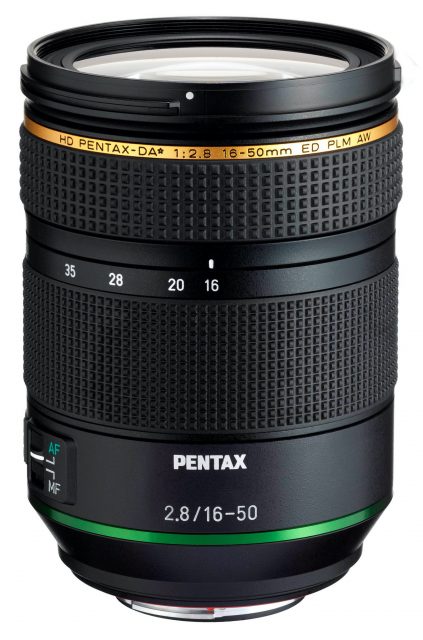
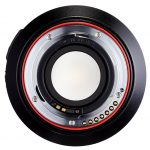

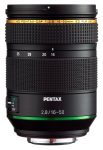

![smc Pentax-DA* 16-50mm F/2.8 ED AL [IF] SDM](https://lens-db.com/wp-content/uploads/2012/07/s-l1600-19-105x150.jpg)
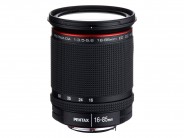
![smc Pentax-DA 17-70mm F/4 AL [IF] SDM](https://lens-db.com/wp-content/uploads/2012/07/s-l1600-41-150x150.jpg)
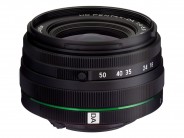

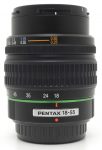
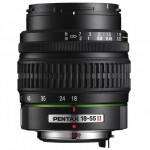
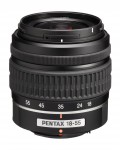
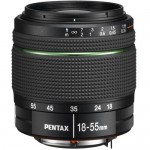
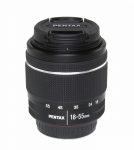
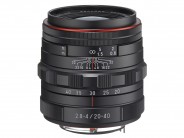
![Sigma 17-50mm F/2.8 EX DC [OS] HSM](https://lens-db.com/wp-content/uploads/2012/07/sigma_17-50_f2-8_os-126x150.jpg)
![Tamron SP AF 17-50mm F/2.8 XR Di II LD Aspherical [IF] A16](https://lens-db.com/wp-content/uploads/2012/07/tamron_17-50-117x150.jpg)